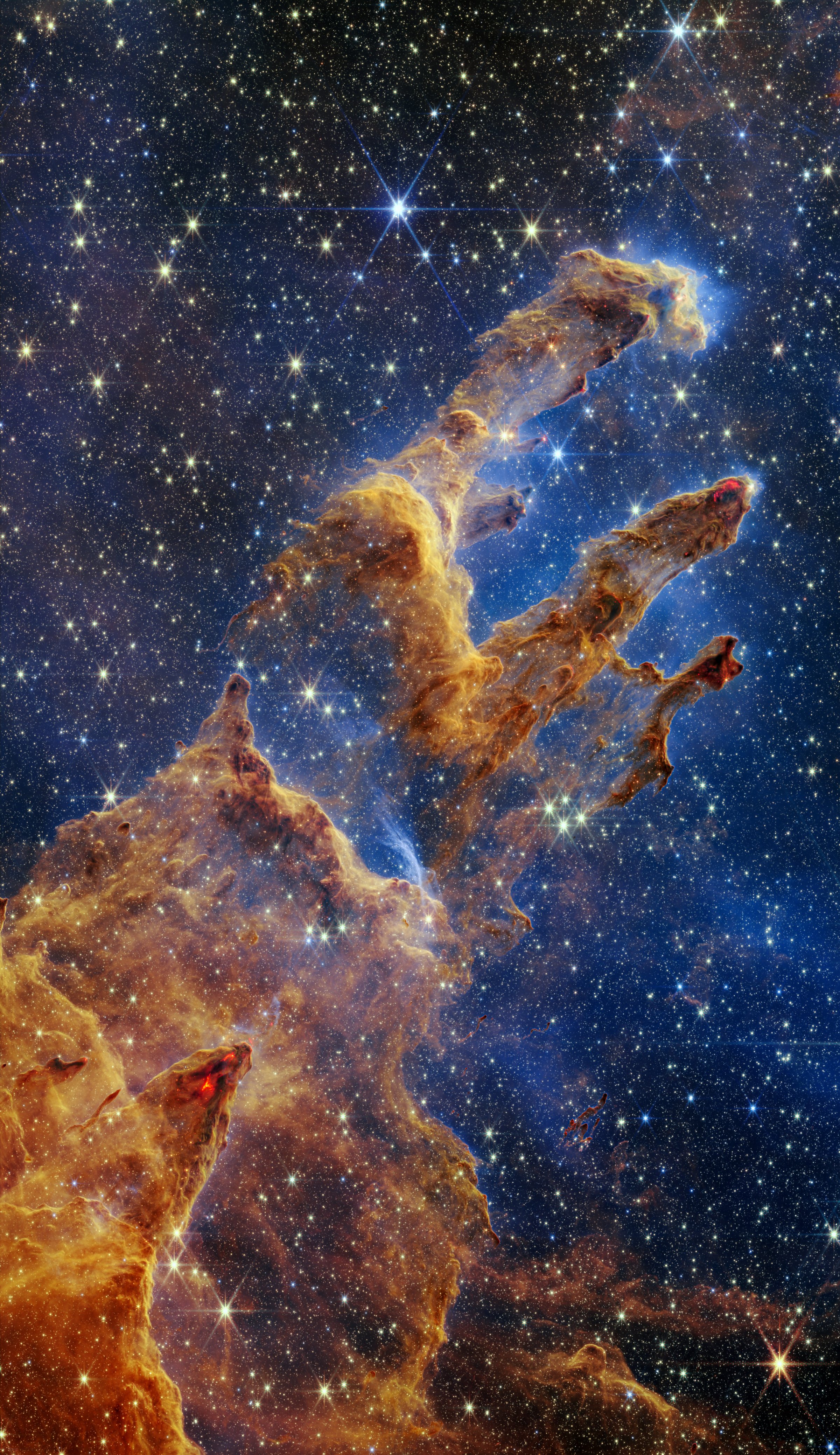
Few people were paying much attention to the doings at the Space Telescope Science Institute (STScI) on the campus of Johns Hopkins University in Baltimore on April 1, 1995. The big news that day included the end of Major League Baseball’s 232-day players’ strike; the withdrawal of U.S. troops from Haiti, after helping to support the embattled government of President Jean-Betrand Aristide; and fresh testimony at the murder trial of one-time football great O.J. Simpson, challenging his claimed whereabouts on the night his former wife and a friend of hers were killed.
With all that, there was little room in the news for what astronomers Jeff Hester and Paul Scowen of Arizona State University had just done. Working with the STScI, they had aimed the Hubble Space Telescope in the direction of the constellation Serpens, 6,500 light years from Earth, and snapped a picture of a busy, star-forming region of the sky known as the Eagle Nebula.
But Hester’s and Scowen’s and Hubble’s work would, in the fullness of time, far outlast the other news that broke on that spring morning 27 years ago. The picture they took—promptly dubbed the Pillars of Creation—easily became the Hubble’s most iconic image. Indeed, it is one of the most iconic images in all of astronomy, reproduced uncounted millions of times on posters, mugs, T-shirts, and more. It is pointed to as eye-popping proof that when it comes to telescopes, the world of science and the world of art can sometimes be hard to distinguish.
This week, the STScI was back at work, releasing a newly taken image of the Pillars of Creation, this time captured by the James Webb Space Telescope—the $10 billion observatory which was launched on Christmas Day 2021, and, since July, has been peering deep into the universe in a sky-gazing campaign expected to last at least 20 years. Hubble’s image of the Pillars of Creation was captured in visible light, while Webb’s was taken in the infrared—revealing fresh details in the nebula that were seen less crisply before.
The three signature pillars in the formation are dense clouds of gas and dust which serve as a nursery for newly forming stars—the youngest of which are just a few hundreds of thousands of years old (compared to the estimated 4.5 billion year age of Earth). The tallest and left most pillar stands an astounding 4 light years—or 38 trillion km (24 trillion mi.)—tall. As NASA explains in a statement accompanying the release of the image, the dust and gas is relatively cool but heats up fast in isolated regions where the material begins to collapse together under gravitational attraction, forming the infant stars. Those stars appear as scarlet dots and smudges within the body of the pillars.
At the edges of the pillars are undulating lines caused by jets of matter fired out into space by the active new stars. Those pulses of energy form the cosmic equivalent of bow shocks, similar to the waves produced by a boat as it plows through a body of water. Energetic hydrogen molecules excited by the waves cause these regions to glow red as well.
NASA describes the new picture as “lush” and “majestic,” and it surely earns those adjectives. But it is something more too: It’s a reminder that news may come and news may go, and events may unfold on Earth in the eyeblink speed of human life spans, but deep in space—which those same perishable humans have taught themselves to observe with instruments crafted by ingenious minds and deft hands—is something closer to a lovely eternity, a sky-scape of images that our science is only now making it possible to witness and cherish.
More Must-Reads From TIME
- Dua Lipa Manifested All of This
- Exclusive: Google Workers Revolt Over $1.2 Billion Contract With Israel
- Stop Looking for Your Forever Home
- The Sympathizer Counters 50 Years of Hollywood Vietnam War Narratives
- The Bliss of Seeing the Eclipse From Cleveland
- Hormonal Birth Control Doesn’t Deserve Its Bad Reputation
- The Best TV Shows to Watch on Peacock
- Want Weekly Recs on What to Watch, Read, and More? Sign Up for Worth Your Time
Write to Jeffrey Kluger at jeffrey.kluger@time.com